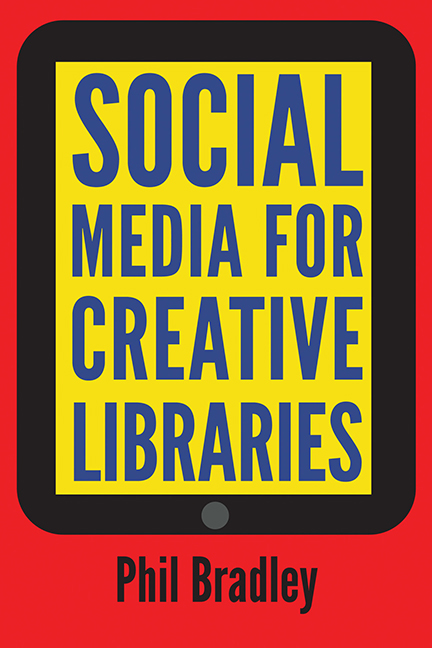Book contents
- Frontmatter
- Contents
- List of figures
- Preface
- 1 An introduction to social media
- 2 Authority checking
- 3 Guiding tools
- 4 Current awareness and selective dissemination of information resources
- 5 Presentation tools
- 6 Teaching and training
- 7 Communication
- 8 Marketing and promotion – the groundwork
- 9 Marketing and promotion – the practicalities
- 10 Creating a social media policy
- Appendix: Social media disasters
- Index
6 - Teaching and training
Published online by Cambridge University Press: 10 September 2022
- Frontmatter
- Contents
- List of figures
- Preface
- 1 An introduction to social media
- 2 Authority checking
- 3 Guiding tools
- 4 Current awareness and selective dissemination of information resources
- 5 Presentation tools
- 6 Teaching and training
- 7 Communication
- 8 Marketing and promotion – the groundwork
- 9 Marketing and promotion – the practicalities
- 10 Creating a social media policy
- Appendix: Social media disasters
- Index
Summary
Introduction
Most of us, at some time in our working careers, are involved in teaching things to other people. It may be a part of our job as a school or college/university librarian, we may need to run induction sessions for colleagues, or it might be necessary to teach a member of the public how to set their privacy settings on Facebook. Often this training is done face to face, and that's generally the best way of working; you’re available to ask and answer specific questions from the trainee, you can easily check to see if they understand what is being said, and you can do a demonstration for them. However, there may be times when you aren't available, or someone needs to learn something at a time when it isn't possible for a member of staff to run a session, or you may have to run exactly the same session several times, which can be tedious and lead to a less-than-expert presentation.
It's at times like this that social media tools can make your job a lot easier, and in this chapter I’ll be looking at some of the ways that you can teach people when you cannot run a face-to-face presentation and I’ll look at some of the other things that you can do to assist the learning process.
Screencasting
The concept behind screencasting is very simple. You record what is happening on your computer screen, narrate it in some way – perhaps by text, audio recording or webcam video – and make it available for people to view at a time that works for them. Some of the tools will simply capture what you are doing in a browser window, others will capture anything that you are doing on the desktop. Some you have to register for, others you can simply use by clicking a button and others again have to be downloaded and installed. As with all of the other tools mentioned in this book, they are free, although some will have a commercial element if you wish to use some of their advanced features.
Quick and easy tools
Screencast-o-matic, www.screencast-o-matic.com, is about as simple as it is possible to get when it comes to screencasting. The home page has a very large ‘Start Recording’ button on it.
- Type
- Chapter
- Information
- Social Media for Creative Libraries , pp. 73 - 84Publisher: FacetPrint publication year: 2015



